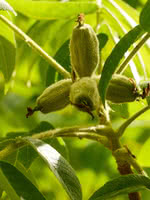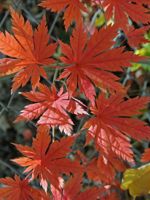Mon-Fri 9am - 5pm Mountain time
Butternut (White Walnut) vs Korean Maple
Juglans cinerea
Acer pseudosieboldianum
NOT AVAILABLE THIS SEASON - MIGHT RETURN
Butternut is one of the few walnut varieties native to Canada. The nuts are sought after for their mild, sweet, and oily taste. Ensure this tree is planted in full sun and well-drained soil for best results.
Butternut is self-fertile but it has better yields when planted near other butternuts. It can survive in zone 2, but reliably produces nuts in zone 3.
A top CO2 absorbing species. Experts think this tree may help climate change more than others.
The Korean Maple is an ideal accent tree, and is similar in size and shape to the Japanese Maple, but much hardier. The leaves have long, finger-like lobes that turn striking shades of yellow, orange and red in autumn.
It is recommended that pruning be done during the summer after the leaves have fully developed to ensure sap does not "bleed" down the tree.

